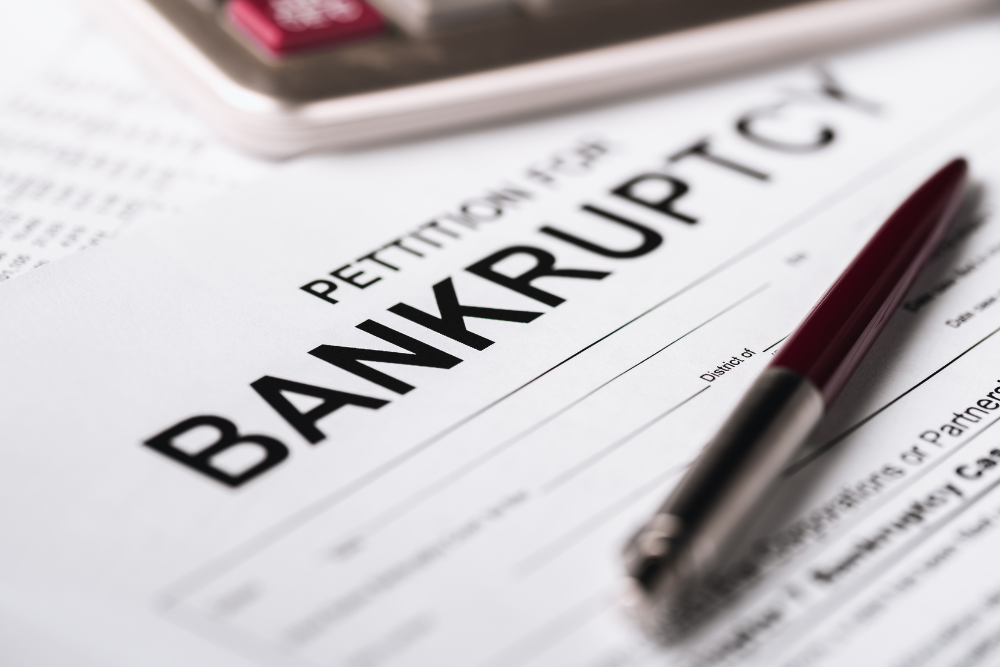How to Remove Bankruptcies from Your Credit Report

Bankruptcy can feel like an insurmountable obstacle on the path to financial recovery, limiting access to loans, rental apartments, and even certain jobs. While bankruptcies can stay on one’s credit report for years, there are ways to challenge these inaccuracies and improve one’s credit standing. These include keeping spending below credit limits and good credit habits.
In this guide, we’ll discuss how to clear your online credit report by removing bankruptcies, real-life ways of repairing credit, and keen insight from the industry to help you more effectively navigate your financial needs.
How Long Does a Bankruptcy Stay on Your Credit Report?

The type of bankruptcy will determine how long it will last in your credit report:
Chapter 7 Bankruptcy: Stays on credit report for up to 10 years from date of filing.
Chapter 13 Bankruptcy: Stays on credit report for up to 7 years from date of filing.
Although these time limits appear to be long, there are care and legal strategies that you can undertake in order to lessen their effects and sometimes quickly get rid of them. Also, with the passage of time, the real effects or consequences of bankruptcy diminish, and responsible credit behavior can do a lot to improve your creditworthiness.
🚨 TUIC Errors + Low Credit Score?
CreditScoreIQ helps you build credit faster by reporting utility bills to all 3 bureaus—while you dispute errors.
Start Building Credit Today →Could a Bankruptcy Be Deleted From the Credit Report?
Yes, if said bankruptcy account is inaccurate, unverifiable, or beyond a reporting time limit. The law requires the credit bureaus to report only accurate information. Any erroneous entries should be disputed to possibly get the bankruptcy removed. If the bankruptcy is legitimate, however, you do have no recourse other than working hard to rebuild your credit rating.
Steps to Remove Bankruptcies From One’s Credit Report
1. Get Copies of Your Credit Reports
You’re entitled to a free copy of your credit report from Experian, Equifax, and TransUnion once a year via AnnualCreditReport.com. Review your reports for any discrepancies related to your bankruptcy.
2. Dispute Any Inaccurate Entries Regarding the Bankruptcy
If you spot inaccuracies, dispute them with the credit bureaus. Common mistakes are:
- Incorrect filing date
- Bankruptcy that doesn’t belong to you
- Duplicate bankruptcy entries
- Outdated bankruptcies still showing after the reporting period
You can dispute errors either online or by mail. The credit bureau must investigate your claim and send a response within 30 days. If they find that the bankruptcy cannot be verified, it will be erased from your report.
3. Challenge the Court About the Bankruptcy
The credit bureaus verify bankruptcy through public records, usually the court where bankruptcy has been filed. Find out whether they report to the credit bureaus. If not, you could challenge the accuracy of the credit reporting with the credit bureaus, which are required to verify any reported information.
4. Work with a Credit Repair Professional
Some credit repair companies are dedicated to the removal of inaccurate negative marks, including bankruptcies. Make sure to work with an accredited company to make sure that you are not scammed by something that guarantees removal overnight. Real credit repair services could guide you through the dispute processes, but never, ever could they erase valid bankruptcies.
Making Recovery of Your Credit Post-Bankruptcy
1. Stay Below Your Credit Limit
Try to keep your credit utilization below 30% to help promote your credit score recovery. This also reflects responsible credit usage over time. Consistent financial responsibility is something lenders are generally willing to support when applying for new credit.
2. How to Apply for a Secured Credit Card
Secured credit cards require deposits but assist in rebuilding credit when used responsibly. Look for one that reports to the three credit bureaus. Responsible use over time can open up better credit card options and an improved credit score.
3. Become an Authorized User
Ask a family member trusted by you to add you as an authorized user on their card. This will allow you to benefit from their positive payment history and will increase your overall age of credit, which is very important in credit scoring.
4. Timely Payments
Timely payment is 35% of your credit score. Always pay your bills on time to avoid anything further marring your credit. Automating payments and setting up reminders will help ensure that you never forget a payment date.
5. Have a Good Mix of Credit
A mix of different credit types (credit cards, installment loans, etc.) can improve your score. If your finances allow, you should also consider applying for a small line of credit like a credit-builder loan.
6. Keep a Close Eye on Your Credit
Regularly monitoring your credit report ensures that if there are any discrepancies, you would spot them quickly and dispute them. Many free credit monitoring tools can alert you to any significant change in your credit report.
Staying Within Credit Limits When Recovery Demands
Responsible Borrowing
Keeping balances low signals to the lenders that you are managing credit responsibly.
Prevents Additional Negative Marks
High credit utilization can lead to missed payments, which further harm your credit.
Improves the Credit Utilization Ratio
Low utilization of credit improves scores faster after bankruptcy.
Establishes Financial Stability
Sticking to credit limits helps one avoid falling into debt traps and prevents further financial challenges.
Conclusion
While bankruptcies continue to show in credit reports for several years, disputing inaccuracies and keeping credit limits helps accelerate credit recovery. The key to credit repair is patience and responsible behavior.
The steps above help rebuild financial history and put an individual back in control of their financial destiny. Good financial habits, regular monitoring of one’s credit report, and informed financial decisions help someone get back on the path to re-establishing creditworthiness.
Did you ever have luck with successfully getting a bankruptcy removed from your report? Share your experience in a comment!
How to Remove Bankruptcy From Your Credit Report (2025 Tactics That Work)
2025 Bankruptcy Reporting Changes
New laws and technologies have transformed bankruptcy removal strategies this year:
⚠️ Critical Update: The FTC’s 2025 FCRA amendments now require:
- Chapter 13 bankruptcies deleted after 7 years (previously 10)
- AI-powered verification by bureaus (fight with our dispute templates)
Step 1: Verify Bankruptcy Status via PACER
Use the PACER system to confirm:
What to Look For
- Dismissal documents
- Discharge dates
- Case number accuracy
Common Errors
- Duplicate filings
- Incorrect chapter type
- Expired reporting periods
[IMAGE PLACEHOLDER: PACER dashboard screenshot showing dismissal docs]
I’ll insert real PACER examples once provided
Step 2: 2025 Dispute Tactics
| Bureau | Strategy | Response Time |
|---|---|---|
| Experian | Use AI-optimized form | 10 days |
| Equifax | Online portal + CFPB copy | 21 days |
| TransUnion | Certified mail with TUCI array citation | 30+ days |
Get Our 2025 Bankruptcy Removal Kit
Includes: PACER walkthrough videos, dispute letter templates, and creditor scripts.
Can you remove bankruptcy before 7 years in 2025?
Yes, through: 1) Early Exclusion programs, 2) Creditor negotiations, or 3) Proving reporting errors via PACER.
How TUCI Arrays Affect Bankruptcy Reporting
TransUnion’s TUCI array system now cross-references bankruptcies with…
Ready to Improve Your Credit?
Disputing TUIC errors is step one. Step two? Boost your score by reporting utility payments with CreditScoreIQ.
Get Started Now (Only $1 Trial) →3-bureau reporting • $1M identity insurance • Dark web monitoring
